-
Science group: storing spent nuclear fuel in dry casks significantly safer then wet pools storage
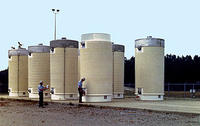
An NRC report on the lessons of the Fukushima disaster says that storing spent nuclear fuel in wet pools is “adequate” to protect the public; a science groups says there is a significantly safer way to store the 55,000 tons of radioactive waste currently stored by the 104 nuclear power plants operating in the United States: transferring the spent fuel to dry casks
-
-
Calculating the global health consequences of the Fukushima nuclear disaster
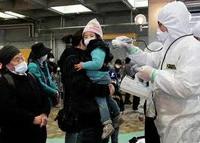
Radiation from Japan’s Fukushima Daiichi nuclear disaster may eventually cause approximately 130 deaths and 180 cases of cancer, mostly in Japan; researchers have calculated; the estimates have large uncertainty ranges, but contrast with previous claims that the radioactive release would likely cause no severe health effects
-
-
Fukushima disaster “a profoundly man-made disaster”: investigative commission
The commission investigating the Fukushima disaster of March 2011 concluded that although the combination of the tsunami and earthquake was unprecedented in its ferocity, the disaster was largely man-made because it was amplified by what came before it and what followed it; the disaster itself, the commission said, was sandwiched by practices and conduct which were the result of government-industry collusion and the worst conformist conventions of Japanese culture; the government, nuclear regulators, and Tepco, the plant operator, “betrayed the nation’s right to safety from nuclear accidents”
-
-
Radiation-resistant circuits from mechanical parts
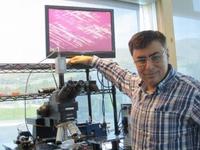
Engineers designed microscopic mechanical devices that withstand intense radiation and heat, so they can be used in circuits for robots and computers exposed to radiation in space, damaged nuclear power plants, or nuclear attack; the devices can also survive work in space
-
-
Long-term priorities for U.S. nuclear physics program
Nuclear physics is a discovery-driven enterprise aimed at understanding the fundamental nature of visible matter in the universe; for the past hundred years, new knowledge of the nuclear world has also directly benefited society through many innovative applications
-
-
Recycling nuclear fuel offers plentiful, clean energy
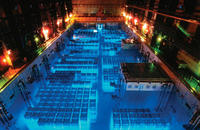
Currently, only about 5 percent of the uranium in a fuel rod gets fissioned for energy in a nuclear reactor; after that, the spent rods, still containing about 95 percent uranium fuel, are taken out of the reactor and put into permanent storage; researchers say that recycling used nuclear fuel could produce hundreds of years of energy from just the uranium that has already been mined, all of it carbon-free
-
-
Mystery surrounds explosives found on Swedish nuclear plant site
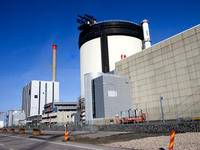
Mystery still surrounds the explosives found on the grounds of Sweden’s largest nuclear power plant last Wednesday. With police providing little information, a terrorist expert speculated the incident might have been an attempt, perhaps by terrorists, to test the security system of the Ringhals power plant with a later attack in mind
-
-
Nuclear waste repositories in suburbia?
Finding sites for nuclear waste storage is a growing problem, with decision makers running into the “not in my back yard” problem; the demise of Nevada’s Yucca Mountain project is but the latest example; researchers find that acceptance of sites for spent nuclear fuel repository may well depend on gender and economic background: in Finland, at least, affluent men more often are more receptive to the idea of locating such facilities near their neighborhoods than women or disadvantaged people
-
-
Security increases around Pennsylvania nuclear disposal site
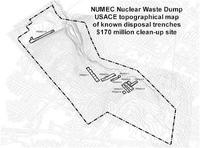
Security around a nuclear waste site in western Pennsylvania has been upgraded, with DHS armed security guards replacing private guards around the site; the reason for the elevated security is the finding, by the Army Corps of Engineers, of more “complex” nuclear materials on the site; it was originally believed that the site contains only low-level nuclear material
-
-
Replacing uranium with thorium to lead to safer, sustainable nuclear power
With the 50 percent increase in global population which is expected over the next fifty years, in order just to maintain per capita electricity consumption, a major power station would need to go online every day somewhere in the world; if this increase in power production is going to be low-carbon, then nuclear power has to play a role in that; scientists say; if uranium was replaced by thorium as a fuel source, current reactor technology could be used and nuclear waste could be safely recycled indefinitely
-
-
Big step taken to develop nuclear fusion power
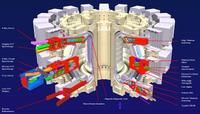
Unlike today’s nuclear fission reactors, fusion reactors use a similar process as that which powers the sun; researchers have successfully developed a key technology in developing an experimental reactor that can demonstrate the feasibility of fusion energy for the power grid; nuclear fusion promises to supply more energy than the nuclear fission used today but with far fewer risks
-
-
Experts: stronger regulation of military, civilian nuclear programs required
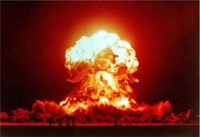
All nuclear energy and weapons programs should be independently regulated and subject to rigorous peer review, according to three experts on nuclear policy who held high office in different U.S. administrations; they note that despite international diplomatic efforts to prevent the proliferation of nuclear weapons and ensure that nuclear material is protected against theft, there is growing apprehension about terrorists acquiring weapons or nuclear material
-
-
Entergy’s Pilgrim Nuclear Power Station gets new 20-year license
The Nuclear Regulatory Commission (NRC) yesterday announced its decision to renew the operating license for Entergy’s Pilgrim Nuclear Power Station in Plymouth, Massachusetts; the approval means the NRC has concluded there is no safety or environmental issue that precludes renewal of the plant’s license to operate for an additional twenty years
-
-
Sandia Labs technology used to clean up Fukushima after disaster
A Sandia Lab-developed technology — crystalline silico-titanate, or CST — is a molecular sieve that can separate highly volatile elements from radioactive wastewater; the technology has been used to remove radioactive material from more than forty-three million gallons of contaminated wastewater at Japan’s damaged Fukushima Daiichi nuclear power plant
-
-
Probability of nuclear reactor core meltdown higher than expected
Currently, there are 440 nuclear reactors in operation, and sixty more are planned; new research finds that reactor accidents involving a core meltdown, as were the Chernobyl and Fukushima, may occur once every ten to twenty years — some 200 times more often than estimated in the past; the authors of the study note that they did not take into account potential contributing factors to accidents such as the age and type of reactors, or whether reactors are located in regions of enhanced risks such as earthquakes
-
More headlines
The long view
Smaller Nuclear Reactors Spark Renewed Interest in a Once-Shunned Energy Source
In the past two years, half the states have taken action to promote nuclear power, from creating nuclear task forces to integrating nuclear into long-term energy plans.
Keeping the Lights on with Nuclear Waste: Radiochemistry Transforms Nuclear Waste into Strategic Materials
How UNLV radiochemistry is pioneering the future of energy in the Southwest by salvaging strategic materials from nuclear dumps –and making it safe.
Model Predicts Long-Term Effects of Nuclear Waste on Underground Disposal Systems
The simulations matched results from an underground lab experiment in Switzerland, suggesting modeling could be used to validate the safety of nuclear disposal sites.
